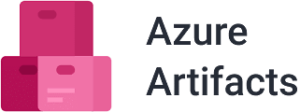In today’s fast-paced development environments, maintaining high productivity while managing dependencies can be a significant challenge. Azure Artifacts, a key component of Azure DevOps, offers a robust solution for seamless package management, enabling teams to store, share, and integrate packages from various sources efficiently. By centralizing package management, Azure Artifacts helps developers avoid the pitfalls of dependency conflicts and versioning issues, ensuring that all team members are working with consistent and reliable codebases.
One of the primary benefits of Azure Artifacts is the reduction in build times and the minimization of friction associated with managing external libraries and tools. Developers can easily access and share packages, which simplifies the integration process and allows for smoother, more streamlined development workflows. This centralized approach not only enhances individual productivity but also improves overall team efficiency, as everyone is on the same page with the tools and libraries being used.
Moreover, Azure Artifacts integrates effortlessly with existing CI/CD pipelines, allowing teams to automate the entire development lifecycle from build to deployment. This seamless integration streamlines workflows and enhances collaboration, as developers can easily publish and consume packages within their projects. The ability to automate package management tasks means that developers can focus more on writing code and less on managing dependencies, thus speeding up the development process.
For .NET developers, using Azure Artifacts is straightforward. Begin by creating a feed in Azure Artifacts, where you can publish your NuGet packages. Within your .NET project, configure your NuGet.config file to point to the Azure Artifacts feed. Use the `dotnet nuget push` command to publish packages to your feed and the `dotnet add package` command to add dependencies from Azure Artifacts to your projects. Advanced features like upstream sources allow you to include packages from public repositories, such as NuGet.org, while still maintaining control over package versions and security
In practice, integrating Azure Artifacts into a .NET workflow involves several steps.
- First, ensure that your Azure DevOps organization has the necessary permissions and that your project is set up to use Azure Artifacts.
- Next, create a new feed in Azure Artifacts to store your NuGet packages. Update your project’s NuGet.config file to include the Azure Artifacts feed URL, ensuring secure access with appropriate credentials. When you build your project, use the `dotnet pack` command to create NuGet packages and `dotnet nuget push` to publish them to your Azure Artifacts feed.
- To consume packages, simply use the `dotnet add package` command followed by the package name. This setup not only simplifies package management but also enhances collaboration, as team members can easily share and access the necessary packages. By leveraging Azure Artifacts, .NET developers can maintain a streamlined, efficient development process, leading to more reliable and maintainable applications.
By leveraging Azure Artifacts, .NET developers can maintain a streamlined, efficient development process, leading to more reliable and maintainable applications. The centralization and automation of package management provided by Azure Artifacts not only boost individual productivity but also facilitate better team collaboration and project consistency. As organizations strive to deliver high-quality software faster, integrating Azure Artifacts into the development workflow becomes an essential step towards achieving these goals. The result is a more agile, responsive development environment where teams can focus on innovation and delivering value to their users.

Leave a Reply